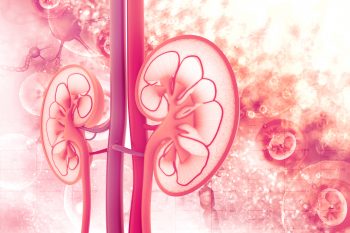
Tolvaptan is approved for the
treatment of adult patients with autosomal dominant polycystic kidney disease
(ADPKD). The medication is costly and has been associated with potentially
serious side effects and is currently reserved for patients at high risk for
disease progression. Nephrologist panels in Canada and Europe have developed
two sets of risk assessment guidelines for ADPKD.
Researchers in Canada, led by Syed
Essam Ahmed, MD, recently conducted a study to examine how well the
guidelines perform in assessing risk of disease progression in this patient
population. Results of the study were reported during a poster session at
Kidney Week 2019 in a poster title How Well Do Risk Assessment Guidelines
Perform for Autosomal Dominant Polycystic Kidney Disease (ADPKD)?
The prospective study included 474
patients with ADPKD typical imaging on magnetic resonance imaging; eligible
patients also had detailed clinical and laboratory data, including total kidney
volume (TKV). The researchers used age- and height-adjusted TKV to derive Mayo
Clinic Imaging Class as a gold standard for risk assessment: low risk, 1A-1B;
high risk, 1C-1E. Canadian guidelines (Can J Kidney Health Dis.
2018;5:2054358118801589) and European Guidelines (NDT 2016;31:337-348) were
applied to the study cohort to assess their performance.
Application of the Canadian risk
assessment algorithm resulted in exclusion of 52% of patients (245/474) in whom
65% were deemed to be low risk (Mayo Clinic Imaging Class 1A-1B) and 35% to be
high risk (Mayo Clinic Imaging Class 1C-1E). The resultant cohort (n=221/503)
was enriched with 88% high-risk patients but also included 12% of low-risk
patients.
The European guidelines provide a
five-step hierarchal algorithm. Application of the first step based on age and
chronic kidney disease stage resulted in exclusion of 74% of patients (351/474)
in whom 69% were deemed to be high risk and 31% were low risk. The resultant
cohort (123/474) was enriched with 72% high-risk patients and 28% low-risk
patients. Application of the second step based on rate of glomerular filtration
rate decline resulted in a total exclusion of 93% of patients (440/474) in whom
59% were deemed to be high risk and 41% low risk. The resultant cohort
(n=34/474) was enriched with 82% high-risk patients and 18% low-risk patients.
In conclusion, the researchers said,
“Risk assessment in ADPKD is an evolving process to be refined by new clinical
data and test technologies. Guidelines that enrich ‘high-risk,’ while
minimizing ‘low-risk’ patients have most clinical utility.”
Source: Ahmen SE, Akbari P, Guiard E,
et al. How well do risk assessment guidelines perform for autosomal dominant
polycystic kidney disease (ADPKD)? Abstract of a poster presented at the
America Society of Nephrology Kidney Week 2019 (Abstract TH-PO833), November 7,
2019, Washington, DC.






 © 2025 Mashup Media, LLC, a Formedics Property. All Rights Reserved.
© 2025 Mashup Media, LLC, a Formedics Property. All Rights Reserved.